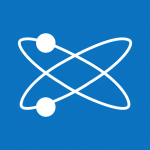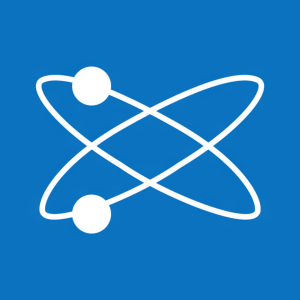Welcome to our dedicated page for Bruker news (Ticker: BRKR), a resource for investors and traders seeking the latest updates and insights on Bruker stock.
Bruker Corporation (BRKR) delivers innovative analytical instrumentation and diagnostic solutions for life sciences, pharmaceuticals, and industrial applications. This news hub provides investors and industry professionals with timely updates on corporate developments, financial performance, and technological advancements.
Access comprehensive coverage of Bruker's press releases, including earnings reports, product launches, strategic partnerships, and regulatory milestones. Our curated news collection simplifies tracking market-moving events and understanding their impact on Bruker's position in scientific instrumentation markets.
Key content categories feature updates across Bruker's business segments - from BSI BioSpin's research tools to BEST's energy innovations. Stay informed about operational expansions, R&D breakthroughs, and quality assurance initiatives that drive the company's global success.
Bookmark this page for direct access to verified Bruker announcements and analysis. Monitor evolving trends in analytical technology through reliable updates from one of the industry's most established instrumentation providers.
Bruker (Nasdaq: BRKR, BRKRP) announced quarterly cash dividends for common and preferred shares.
The Board approved a $0.05 per share common stock dividend, payable January 2, 2026 to holders of record as of December 8, 2025. The Board also approved a $3.6745 per share dividend on the 6.375% Mandatory Convertible Preferred Stock, Series A, payable December 1, 2025 to holders of record as of November 15, 2025.
Bruker (Nasdaq: BRKR) will report third quarter 2025 financial results before market open on Monday, November 3, 2025.
The company will host a live conference call and webcast at 8:30 a.m. Eastern Time to discuss results and current business trends. A slide presentation will be posted to the investor website shortly before the webcast. Investors can access the webcast at https://ir.bruker.com or join by phone at 1-888-437-2685 (U.S.) or +1-412-317-6702 (international).
Pre-registration is available at https://dpregister.com/sreg/10204017/100302815b8 to receive a personalized dial-in and PIN. A telephone replay will be available beginning one hour after the call through December 3, 2025 at 1-877-344-7529 (U.S.) or +1-412-317-0088 using access code 6763149.
Bruker (Nasdaq: BRKR) announced three federally funded NMR system orders totaling approximately $10 million, placed by the New York Structural Biology Center, University of Delaware and Northwestern University on October 3, 2025. The NYSBC order is an NIH-funded 700 MHz Multifield NMR Relaxometry system—the first in North America—serving a 9-institution New York consortium and the national NIH center. Delaware ordered a NSF-funded 600 MHz DNP NMR to serve 25+ internal groups and 12 collaborators. Northwestern ordered an 800 MHz spectrometer supporting 15+ NIH-funded groups. Deliveries are expected in 2026.
Bruker Corporation (Nasdaq: BRKR) has announced the pricing of its public offering of $600 million of 6.375% Mandatory Convertible Preferred Stock, Series A. The offering includes 2.4 million shares at a liquidation preference of $250 per share, with a 30-day option for underwriters to purchase an additional $90 million.
The preferred stock will automatically convert to common stock on September 1, 2028, with conversion rates between 6.9534 and 8.5179 shares of common stock per preferred share. Dividends will be paid quarterly at a 6.375% annual rate starting December 1, 2025. The company expects net proceeds of approximately $582 million, which will be used to repay various term loans and credit facilities.
Bruker Corporation (Nasdaq: BRKR) has announced a public offering of $600 million in Mandatory Convertible Preferred Stock, Series A. The offering includes 2.4 million shares with a liquidation preference of $250 per share, with an additional 30-day option for underwriters to purchase up to $90 million more shares.
The company plans to use the proceeds to strengthen its balance sheet by repaying various loans, including a term loan due December 2026, outstanding borrowings under its 2024 revolving credit agreement, and part of a term loan due March 2027. The preferred stock will automatically convert to common stock around September 1, 2028, unless converted earlier by holders.
Bruker Corporation (Nasdaq: BRKR) has announced a quarterly cash dividend of $0.05 per share on its common stock. The dividend will be paid on October 3, 2025 to stockholders of record as of September 23, 2025. This announcement reflects the company's continued commitment to returning value to shareholders through regular dividend payments.
Bruker Corporation (Nasdaq: BRKR) has secured multiple contracts worth over $27 million in 2025 for its explosives and chemical trace detection solutions. The company announced significant deployments including a seven-year framework agreement with Brussels Airport for 80 ETD units, over 200 units across Scandinavian airports, 74 units in Saudi Arabia, and 17 units at Incheon International Airport.
The contracts also include an order for 500 chemical reconnaissance systems from a Central European country's Ministry of Defense. Bruker's detection portfolio includes DE-tector flex systems for passenger and cargo screening, and RAID-XP and RAPIDplus chemical detection systems for homeland security applications.
Bruker Corporation (Nasdaq: BRKR) reported challenging Q2 2025 financial results with revenues of $797.4 million, down 0.4% year-over-year, and organic revenue declining 7.0%. The company's Q2 2025 GAAP diluted EPS was $0.05, while non-GAAP diluted EPS decreased 38.5% to $0.32.
Facing pressure in US academic, biopharma, and industrial markets, Bruker announced a major cost savings initiative targeting $100-120 million in annual cost reductions by FY 2026. The company updated its FY2025 guidance, now expecting revenues of $3.43-3.50 billion (2-4% growth) and non-GAAP EPS of $1.95-2.05, down from $2.41 in FY 2024.
Despite current challenges, Bruker introduced key innovations in proteomics and metabolomics, including timsOmni, timsMetabo, and timsUltra AIP platforms, while expanding its multiomics solutions through the Biocrates acquisition.
Bruker (Nasdaq: BRKR) released preliminary Q2 2025 results, reporting expected revenue between $795-798 million, representing flat reported revenue year-over-year. The company's non-GAAP organic revenue declined approximately 7% year-over-year, while constant-exchange rate revenue decreased about 3%.
Expected non-GAAP EPS of $0.32-0.34 shows a decline of approximately $0.19 per share year-over-year, including a $0.06 foreign currency headwind. The company noted weak academic demand and softness in the U.S. biopharma market affecting Q2 2025 bookings. Bruker will host its earnings conference call on August 4, 2025, at 8:30 a.m. EDT to discuss these results and ongoing cost actions.


